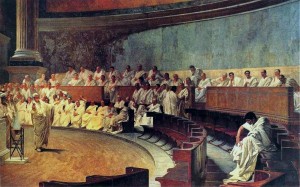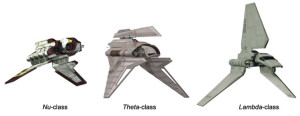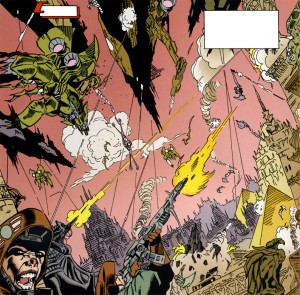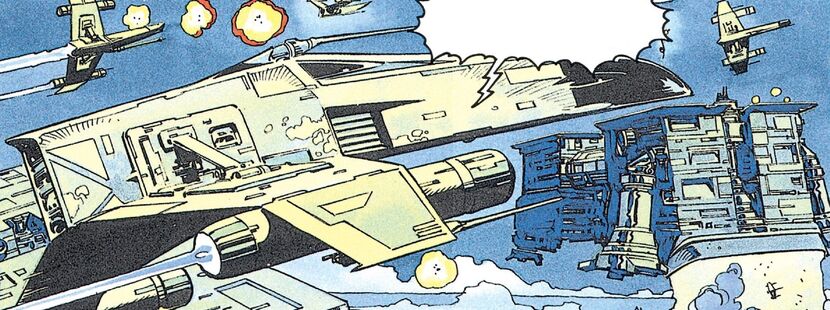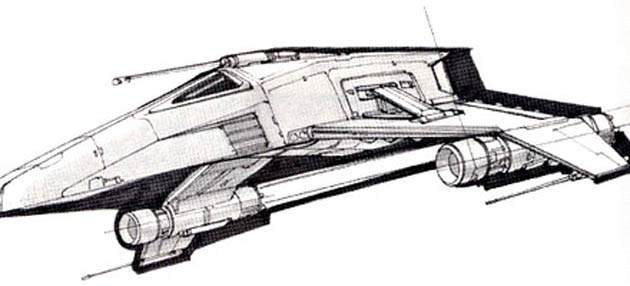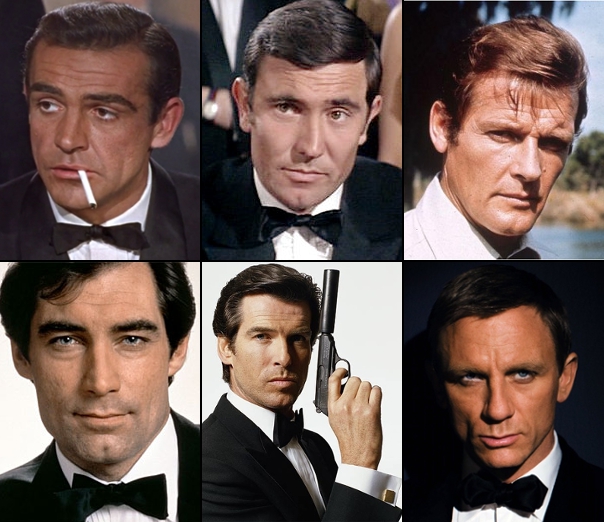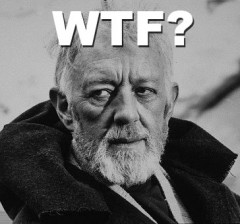A Republic is formed in a central region, is led by a Senate, undergoes a great period of expansion, fights wars against nomadic invaders and its cultural antecedents, and transitions from a republic to an empire under the direction of a charismatic leader who outlived his detractors. Many storylines and facets of various fantasy universes draw on Roman history, from the Malazan Empire of Malazan Book of the Fallen and the Septim Empire of The Elder Scrolls to the the Valyrian Freehold in A Song of Ice and Fire. Star Wars is no different in this regard. Several significant similarities exist between the Galactic Republic and the Roman Republic, from their languages to their enemies.
Lingua Franca Galactica
The Latin alphabet has been canonized within the Galaxy Far, Far Away as the ancient language of the Republic. For years, Latin letters have appeared in the EU- see, for example, the signatures on the Declaration of a New Republic. Latin was canonized as the High Galactic Alphabet by John Hazlett, known to TF.N posters as jSarek, in his article The Written Word. High Galactic originated with the Alsakani, one of the founding cultures of the Republic. Within the GFFA, it is still used for signatures, droid designations (note that, to paraphrase Dan Wallace, we never refer to a certain smarmy astromech as ReshTwo-DornTwo, or his flighty counterpart as Cresh-ThreePethOsk), and names of starships. Whether or not Latin itself exists within the GFFA is debatable. While various Latin and pseudo-Latin names appear frequently in Star Wars– the Imperial Navy is replete with vessel classes such as the Praetor, the Acclamator, the Venator, and the Imperator— such words could also originate other Core World tongues.
Senatus
Like the Roman Republic, the Galactic Republic was governed by a Senate. The Senate was led, of course, by the Supreme Chancellor. While many of the details of the office of the Supreme Chancellor align more closely with modern European prime ministerships, it is notable that the Chancellor’s office was represented by a fanned spear, similar to the fasces, the symbol of the authority of the consul (The fasces was an axe surrounded by a bundle of sticks, symbolizing the power of a Roman consul or dictator to dole out capital punishment, if necessary). Notable differences exist, however, between the Galactic Senate and the Roman Senate. In particular, the manner of representation differed greatly between the two organizations. The Galactic Senate was composed of representatives from member worlds, systems, or regions. Every region had explicit representation in some form or another. Elections were usually left up to the individual star systems. In contrast, the Roman Senate under the Republic was appointed either through the censors or by election to a magistracy. There was no Senator of Achaea, no Senator of Mauretania- it was a Senate of, by, and for the Romans.
Socii
One of the many fascinating sections of the Essential Atlas dealt with the Allied Regions, semi-independent sectors within the Old Republic. Allied Regions often originated as the domains of early adversaries of the Galactic Republic who chose accession over violence, and were generally left to govern their own affairs. Many of the Allied Regions could be found along what had been, at various points in time, the Republic’s frontier. Allied states were also a staple of Roman administration, first in Italy and later along the frontier. During the Republic, many of the Italic cities constituted autonomous states within the Roman Republic complete with their own citizenship, language, and local governance. In exchange for obeisance, taxes, and troops, these cities were largely left to govern their own affairs. Along the frontiers of the Republic- and later, the Empire- allied client kingdoms were established in sensitive regions that the Romans did not wish to directly control. Rather, Rome ruled through client kings (who often had Roman citizenship) in areas such as Bithynia and Armenia. The Galactic Empire had similar arrangements with Hutt Space and the Corporate Sector.
I Fear the Tionese Even When They Bear Gifts
The enemies of the Galactic Republic at times bore a striking resemblance the adversaries of the Roman Republic, and to a lesser extent the Roman Empire. Early on in her history, the Republic fought a series of vicious clashes with polities in the Tion Cluster. The Tion were already an ancient human culture by the year 24000 BBY, and Tionese culture had influenced much of the rest of human culture in the GFFA– certain Core worlds, such as Alsakan, even believed themselves to be Tionese colonies. However, by this point in time the Tionese had entered a long decline- Xim was long dead, the Hutts had ravaged many of their worlds, and the cluster itself had fractured into feuding polities. The Tionese War ended in a resounding Republic victory, as the Republic glassed Desevro. This conflict rather resembles the Macedonian Wars, a series of wars fought by the Roman Republic in the 2nd Century BCE against the Antiochids of Macedonia. Like the Galactic Republic, the Romans were fighting an enemy who had exerted a great cultural influence over them- a culture that was perceived to have fallen from a putative golden age and returned to a set of small feuding city-states and kingdoms following the death of Alexander. Jason Fry’s Xim Week and John Hazlett’s The Written Word pretty firmly established the Tionese as Hellene analogues in the GFFA (more on that next time), going so far as to officially canonize the ancient Greek alphabet as the Tionese language (thereby explaining the presence of Lambda-class shuttles and Delta Squad).
Mandalorians at the Gates
Thousands of years later, the Republic would clash with nomadic invaders from the Outer Rim: the fearsome Mandalorians. The Mandalorians would take part in several wars against the Republic, wreaking havoc from Dxun and Eres III to Duros in the Galactic Core, and even briefly striking at Coruscant itself during the Great Sith War. The Mandalorians were originally portrayed as a staple fantasy nomadic warrior culture- something of a cross between the Vikings and the Mongols. In recent years- particularly since Karen Traviss gave her own take on the Mandalorians- the trend has moved more towards portraying the Mandalorians as Space Celts. And the Romans were quite familiar with fighting Celtic cultures. To the Romans, the Gauls were a cultural bogeyman similar to the role played by the Persians in the Greek psyche. Traditionally the Gauls had harried the Romans from Northern Italy for centuries- in 391 BCE, the Gauls even managed to sack the city of Rome itself. On a more general level, the clashes between the Republic and the Mandalorians are reminiscent of the wars between the later Roman Empire and nomadic groups such as the Franks and the Goths. Notably, both the Mandalorians and the Goths served as mercenaries for the very governments they famously fought.
Transition to Imperium Galacticum
The earliest canonical mentions of the Old Republic are found in Episode IV, when Tarkin informs the rogue’s gallery of admirals, generals and Sith Lords aboard the Death Star that the Imperial Senate has been disbanded, and “the last vestiges of the Old Republic have been swept away”. The prequels would later elaborate on the transition from Republic to Empire, a transition which occurred at the behest of one Chancellor Palpatine- a figure who was inspired by many historical figures, among them Augustus Caesar. Augustus was able to engineer his election to the consulship soon after the assassination of Julius Caesar in 44, and utilized his position to eliminate his opponents and consolidate his hold over the Roman government. Most of his powers were in fact voted to him by the Senate- during the Second Settlement tribunician power was granted to him, as well as censorial power (Tribunican power gave him the power to propose and veto legislation, while censorial power allowed Augustus to appoint and dismiss senators. This all was in addition to the executive powers he held as consul.). During and following his consolidation of power, Augustus embarked on a series of military campaigns throughout the Mediterranean world, incorporating new areas into the Empire and reasserting control over regions where control had been tenuous. All of which should sound very familiar to the career of Chancellor Palpatine. Like Augustus, Palpatine was able to effectively rewrite the history of his rise to power in order to suit his needs– Palpatine portrayed the Jedi Order as the perpetrators of the Clone Wars, as well as suppressing or rewriting accounts that contradicted his narrative. Augustus, in his Res Gestae Divi Augusti (The Accomplishments of the Divine Augustus- the funerary inscription listing Augustus’s achievements) whitewashed his actions during the Second Triumvirate and the Civil Wars, glossing over the widespread murders of his political opponents while trumpeting how he “brought peace” to the Roman people.
Conclusion
While it lacks a Romulus-style foundation myth, the Galactic Republic nevertheless followed many of the precedents set by the Roman Republic. The Galactic Republic’s enemies took many cues from the Roman Republic’s enemies, from culture and language to their own history. These kinds of historical references abound in the Star Wars films and Expanded Universe, and are likely to appear in Disney’s iteration of the franchise as well.
Next time on A Long Time Ago, Tyler will explain why the Tionese are Space Greeks and how Xim the Despot is a less competent Alexander the Great with beam-tube technology.

